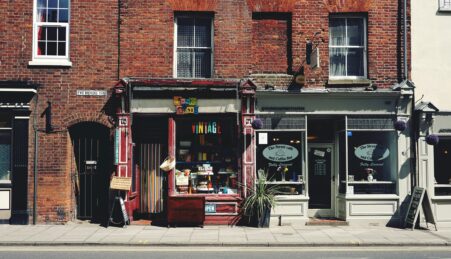
By Sojourner McKenzie
As part of the Humanities in Public series ‘Contesting Youth’, legendary DJ, Dave Haslam, appeared at Manchester Metropolitan University to give a talk on the youth culture which surrounds clubs and nightlife. The event, held in conjunction with the Manchester Centre for Youth Studies, saw Haslam, now also a writer and cultural historian, begin his talk on clubs and youth culture to a packed lecture theatre by describing an interview with a man called Patrick Lily. Mr Lily, he said, found a means of self-expression by going to the club The Rum Runner in the 1970s. In the Rum Runner club, Patrick found his ‘tribe’ in the form of the LGBTQ scene.
This was a common thread throughout the lecture: People who did not fit into the mainstream. They wanted to find a way to express themselves and used offbeat clubs in order to find likeminded people. As Haslam said “A night out gives you the opportunity to choose your own friends.”
Usually, these clubs were where subcultures arose, such as the Goths and the New Romantics, and as Haslam described, bands such as Duran Duran and Massive Attack started from a club setting. In Manchester in particular, the Hacienda played an enormous part in the club scene, giving rise to, among many others, bands such as The Happy Mondays. These cultures were also often geographically on the outskirts of cities, as well as culturally.
 Speaking to Humanity Hallows ahead of the talk, Dave Haslam told us, “You’re always going to have the mavericks in the back alleys and basements doing something a bit different. Whilst the main venues in the 20s were playing jazz, in the basements they were playing bebop and creating a whole new music for themselves.”
Speaking to Humanity Hallows ahead of the talk, Dave Haslam told us, “You’re always going to have the mavericks in the back alleys and basements doing something a bit different. Whilst the main venues in the 20s were playing jazz, in the basements they were playing bebop and creating a whole new music for themselves.”
However, the clubs that these subcultural groups frequented rarely stayed open for long, as tastes changed and people found other subcultures to contribute to. But as Haslam also noted, “People who went to these clubs were often met by disbelief by ‘regular clubbers’. They most likely would respond negatively and violently.” So these clubs often represented a safe haven. This was particularly so for the LGBTQ community, who had to have secret meeting places as far back as the 1600s, as at the time that 20th century subcultures were arising, it was still illegal to be gay in the United Kingdom. Meeting places on the geographical outskirts, then, were a matter of safety.

Haslam noted that the idea of going out and socializing at the weekend was not strictly a twentieth century phenomenon. In Friedirch Engels’ Condition of the Working Class in England, a study on Manchester’s working class at the time of the industrial revolution, Haslam found that there were passages that marked the mind-numbing work of the factory workers, who then used the weekend to express themselves. He wondered whether this was because it was a new phenomenon to send young people off to a new city to go work, comparing their hedonistic behaviour to Fresher’s Week.
Overall it was a stimulating lecture and the audience seemed engaged and responsive. One audience member, Siobhan, commented, that she was fascinated by the talk, saying that “Venues are kind of magical”.
For more information on the Contesting Youth strand of the Humanities in Public Festival, please visit www.hssr.mmu.ac.uk/hip/201415-events/contesting-youth/
Sojourner McKenzie is Entertainment Editor at Humanity Hallows. She is starting her second year of an English and Film degree and spends most of her time ranting at no-one in particular about everything. Follow her on Twitter @runsojrun








Leave a reply